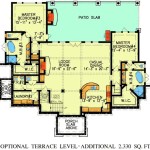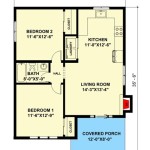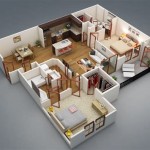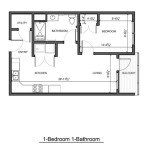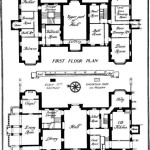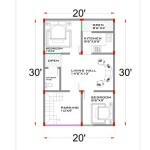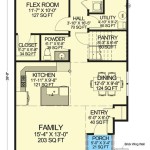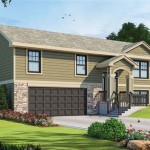Frank Lloyd Wright Style Home Plans: Embracing Organic Architecture
Frank Lloyd Wright, a seminal figure in 20th-century architecture, left an indelible mark on residential design. His philosophy, known as organic architecture, emphasized harmony between human habitation and the natural world. This principle manifested in homes characterized by open floor plans, integration with the landscape, and a distinct aesthetic that continues to inspire architects and homeowners today. Frank Lloyd Wright style home plans, therefore, represent a deliberate effort to capture the essence of his design principles and translate them into contemporary living.
Understanding Frank Lloyd Wright style home plans requires familiarity with the core tenets of organic architecture. It’s not simply about mimicking the outward appearance of a Wright-designed home, but rather embodying the philosophical principles that underpinned his work. This includes a commitment to natural materials, a focus on horizontal lines, and a seamless integration of interior and exterior spaces. These elements work in concert to create a dwelling that feels both grounded and spacious, a sanctuary that reflects the beauty and serenity of its surroundings. A genuine appreciation for these principles is essential for anyone considering a Frank Lloyd Wright style home plan.
One of the defining characteristics of a Frank Lloyd Wright home is its connection to the landscape. The house is not merely placed on the land, but rather appears to grow out of it. This is achieved through careful attention to site placement, the use of natural materials that blend with the environment, and the incorporation of features like terraces and gardens that blur the boundary between indoors and outdoors. This connection is further enhanced by Wright's emphasis on natural light, which is often achieved through large windows and skylights that flood the interior with sunlight.
Frank Lloyd Wright style home plans are not necessarily reproductions of his existing designs. While some homeowners might seek to replicate a specific Wright house, more often, these plans draw inspiration from his overall design philosophy. This allows for a degree of customization and adaptation to suit the specific needs and preferences of the homeowner, while still remaining true to the spirit of organic architecture. It also allows for the incorporation of modern amenities and technologies, while maintaining the timeless appeal of Wright's designs.
Key Point 1: The Importance of Site Integration
A fundamental aspect of Frank Lloyd Wright style home plans is the careful consideration of the building site. Wright believed that a house should be designed in harmony with its surroundings, rather than imposing itself upon the landscape. This means taking into account the topography, climate, vegetation, and views of the site when developing the design. The orientation of the house should maximize natural light and ventilation, while also providing privacy and protection from the elements. The use of local materials, such as stone and wood, can further enhance the connection between the house and its environment.
The concept of "site specificity" is crucial. A Frank Lloyd Wright style home plan designed for a wooded lot in the Midwest will be vastly different from one designed for a desert landscape in the Southwest. The architectural style must adapt to the unique characteristics of the site. This might involve using different materials, adjusting the roofline, or incorporating different landscaping elements. By carefully considering the site, the house can become an integral part of the landscape, rather than a separate entity.
Furthermore, the approach to the house should be carefully considered. Wright often favored long, winding driveways that gradually reveal the house, rather than a direct, frontal approach. This creates a sense of anticipation and allows the visitor to appreciate the house from different angles. The landscaping should also be carefully designed to complement the architecture and enhance the overall sense of harmony.
Key Point 2: Characteristics of Interior Design
The interior design of a Frank Lloyd Wright style home is as important as the exterior. Wright emphasized the use of open floor plans, which create a sense of spaciousness and allow for a seamless flow between rooms. This contrasts with the traditional compartmentalized layout of many older homes. The open floor plan encourages interaction and communication, while also providing flexibility for different activities.
Natural light plays a crucial role in the interior design. Large windows and skylights are used to flood the interior with sunlight, creating a warm and inviting atmosphere. Wright often used stained glass windows to add color and texture to the interior, while also providing privacy. The placement of windows is carefully considered to maximize natural light and to frame views of the surrounding landscape. He also employed clerestory windows, positioned high on the walls, to introduce light while maintaining privacy.
Built-in furniture is another hallmark of Frank Lloyd Wright's interior design. He believed that furniture should be integrated into the architecture of the house, rather than being treated as separate objects. Built-in shelves, cabinets, and seating areas are common features in Wright-designed homes. This not only saves space but also creates a sense of unity and coherence in the interior. The materials used in the interior design are typically natural and simple, such as wood, stone, and brick. These materials are chosen for their beauty, durability, and ability to blend with the surrounding landscape.
Fireplaces are often a central feature in Frank Lloyd Wright style homes. They serve as a focal point for the living room and provide warmth and comfort. Wright often designed fireplaces with large hearths and simple, geometric forms. The fireplace is typically constructed of natural stone or brick, which further enhances the connection to the outdoors.
Key Point 3: The Use of Horizontal Lines and Materials
Horizontal lines are a defining characteristic of Frank Lloyd Wright's architectural style. He believed that horizontal lines conveyed a sense of stability, groundedness, and connection to the earth. This is reflected in the low-pitched roofs, long, overhanging eaves, and horizontal bands of windows that are common in Wright-designed homes. The horizontal lines create a sense of visual calmness and serenity, while also emphasizing the relationship between the house and the landscape.
The choice of materials is also crucial to the overall aesthetic of a Frank Lloyd Wright style home. Natural materials, such as wood, stone, and brick, are preferred over artificial materials. These materials are chosen for their beauty, durability, and ability to blend with the surrounding environment. Wright often used local materials, which further reinforces the connection between the house and its site. The materials are typically left in their natural state, with minimal finishing or ornamentation. This allows the inherent beauty of the materials to shine through.
Stone is often used for the foundation, walls, and fireplaces of Frank Lloyd Wright style homes. It provides a sense of strength and permanence, while also blending seamlessly with the landscape. Wood is used for the framing, siding, and interior finishes. It provides warmth and texture, while also being a sustainable and renewable resource. Brick is used for walls, floors, and fireplaces. It provides a sense of history and tradition, while also being a durable and low-maintenance material.
The colors used in a Frank Lloyd Wright style home are typically muted and earthy, reflecting the colors of the surrounding landscape. Browns, greens, grays, and tans are common choices. These colors create a sense of harmony and balance, while also being visually calming and relaxing. Bright colors are typically used sparingly, as accents, rather than dominating the overall color scheme.
Beyond these fundamental elements, Frank Lloyd Wright style home plans also often incorporate features like carports (rather than enclosed garages), reflecting Wright's belief in the importance of connecting with the outdoors. These spaces are designed to be open and airy, providing shelter for vehicles without detracting from the overall aesthetic of the house.
Creating a home in the Frank Lloyd Wright style requires a careful balance between adhering to his design principles and adapting them to modern living and individual needs. A successful Frank Lloyd Wright style home plan will not only capture the aesthetic of his designs but also embody the spirit of organic architecture, creating a home that is both beautiful and functional, a true sanctuary that harmonizes with its surroundings.

Frank Lloyd Wright Inspired Home Plan 85003ms Architectural Designs House Plans

Frank Lloyd Wright Inspiration 20092ga Architectural Designs House Plans

Frank Lloyd Wright Inspired Home Plan 85003ms Architectural Designs House Plans

Prairie House Plans Monster

Frank Lloyd Wright Home Plans Homes

11 Frank Lloyd Wright Ideas

Flw Heurtley House Floor 1 2 Vintage Plans Frank Lloyd Wright Oak Park

5 Great Architectural Inspirations From Frank Lloyd Wright The House Designers

Three Frank Lloyd Wright Unbuilt Houses Brought To Life As Digital Reconstructions

Frank Lloyd Wright Inspired Homes For Modern Living Loyd Houses

